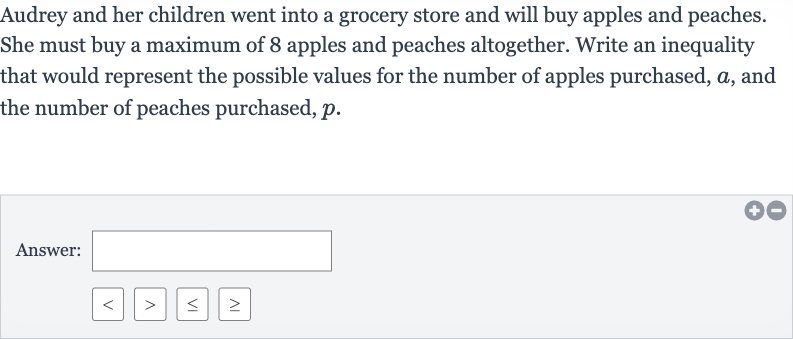AI tutor
Welcome to Bytelearn!
Let’s check out your problem:

Audrey and her children went into a grocery store and will buy apples and peaches. She must buy a maximum of apples and peaches altogether. Write an inequality that would represent the possible values for the number of apples purchased, , and the number of peaches purchased, .Answer:
Full solution
Q. Audrey and her children went into a grocery store and will buy apples and peaches. She must buy a maximum of apples and peaches altogether. Write an inequality that would represent the possible values for the number of apples purchased, , and the number of peaches purchased, .Answer:
- Define Variables: Let's define the variables: number of apples purchased number of peaches purchasedThe problem states that Audrey can buy a maximum of apples and peaches altogether.
- Write Inequality: We need to write an inequality that represents the sum of apples and peaches being less than or equal to .The inequality will be:
- Check Inequality: Now, let's check if the inequality makes sense in the context of the problem. If Audrey buys apples and no peaches, the inequality would be , which is true. If she buys apples and peaches, the inequality would be , which is also true. If she buys apples and no peaches, the inequality would be , which is false, and that's consistent with the problem's condition that she cannot buy more than fruits in total.
More problems from One-step inequalities: word problems
QuestionGet tutor help
QuestionGet tutor help
QuestionGet tutor help
QuestionGet tutor help
QuestionGet tutor help
QuestionGet tutor help
QuestionGet tutor help
QuestionGet tutor help
